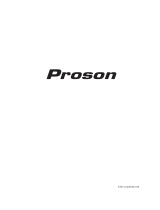ENGLISH
17
SURROUND SOUND
• This receiver incorporates a sophisticated Digital Signal Processor that allows you to create optimum sound quality and sound
atmosphere in your personal Home Theater.
■DTS Digital Surround
DTS Digital Surround(also called simply DTS) is a multi-
channel digital signal format which can handle higher data
rates. Discs bearing the DTS logo include the recording of
up to 5.1 channels of digital signals, which can be generally
thought to provide better sound quality due to the lower
audio compression required.
It also provides wide dynamic range and separation,
resulting in magnificent sound.
■DTS 96/24
This is high resolution DTS with a 96 kHz sampling rate
and 24 bit resolution, providing superior fidelity. Use it with
DVDs bearing the DTS 96/24 logo.
Manufactured under license under U.S. Patent #'s: 5,451,942;
5
,956,674; 5,974,380; 5,978,762; 6,226, 616; 6,487,535 & other U.S.
a
nd worldwide patents issued & pending. DTS and DTS Digital
Surround are registered trademarks and the DTS logos , Symbol and
DTS 96/24 are trademarks of DTS, Inc. ⓒ 1996-2008 DTS, Inc. All
Rights Reserved.
■Dolby Digital
Dolby Digital is the multi-channel digital signal format
developed by Dolby Laboratories. Discs bearing the Dolby
Digital logo includes the recording of up to 5.1 channels of
digital signals, which can reproduce much better sound
quality, spatial expansion and dynamic range
characteristics than the previous Dolby Surround effect.
■Dolby Pro Logic II surround
This mode applies conventional 2-channel signals such as
digital PCM or analog stereo signals as well as Dolby
Surround signals, etc. to surround processing to offer
improvements over conventional Dolby Pro Logic circuits.
Dolby Pro Logic ll surround includes 3 modes as follows:
• Dolby Pro Logic ll MOVIE
When enjoying movies, this mode allows you to further
enhance the cinematic quality by adding processing that
emphasizes the sounds of the action special effects.
• Dolby Pro Logic ll MUSIC
When listening to music, this mode allows you to further
enhance the sound quality by adding processing that
emphasizes the musical effects.
• Dolby Pro Logic ll Emulation
This mode expands any 2-channel sources(, including
Dolby Surround sources) for 4 channel(front left, center,
front right and surround) playback.
The surround channel is monaural, but is played through
two surround speakers.
Dolby, Pro Logic, and the double-D symbol are registered
trademarks of Dolby Laboratories.
• The following modes apply conventional 2-channel
signals such as digital PCM or analog stereo signals to
high performance Digital Signal Processor to recreate
sound fields artificially.
■Virtual Surround 2 Speaker
This mode creates a virtual surround sound field using as
few as two front speakers, allowing you to experience
listening from 5.1 channel speakers.
This mode is effective not only for 5.1 channel sources but
also for 2 channel sources.
■Virtual Surround 3 Speaker
This mode creates a virtual surround sound field using two
front and one center speakers, allowing you to experience
listening from 5.1 channel speakers. This mode is effective
only for 5.1 channel sources.
■Big Hall/Bright Hall/Dark Hall
These modes provide the ambience of a concert hall for
classical music sources such as orchestral, chamber
music, or an instrumental solo.
■Cathedral
This mode provides the ambience of a cathedral for
baroque, string orchestral or choral group music.
■Club/Bright Club/Smoky Club
These modes provide the ambience of a live house for jazz
music, vocals and acoustical instrumental sounds.
■Bright Stadium
This mode provides the expansive sound field to achieve
the true stadium effect when watching baseball or soccer
games.
■Arena
This mode provides a dynamic and broad sound space to
heighten the overall impact of the sound track.
■Vox Cinema/Music Cinema
When listening to movie, select the Vox Cinema mode to
enhance the clarity of the dialog or select the Music
Cinema mode to enhance the musical effects.
■5CH Stereo
This mode is for enjoying stereo sound from all speakers.
■Virtual Surround Headphone
This mode simulates 5.1 channel surround sound, which
allows you to enjoy 5.1 channel surround sound through 2
channel headphone, just like listening from 5.1 channel
speakers. This mode effective not only 5.1 channel sources
but also for 2 channel sources.
Surround modes
• When the EXTERNAL INs is connected to the 6CH decoder for a surround sound such as Dolby Digital, etc., you can enjoy
the corresponding surround sound, too. (For details, see the operator's manual of the component to be connected.)
RD-6504(G):RD-6504(G) 2009-02-12 오 9:35 페이지 17





















